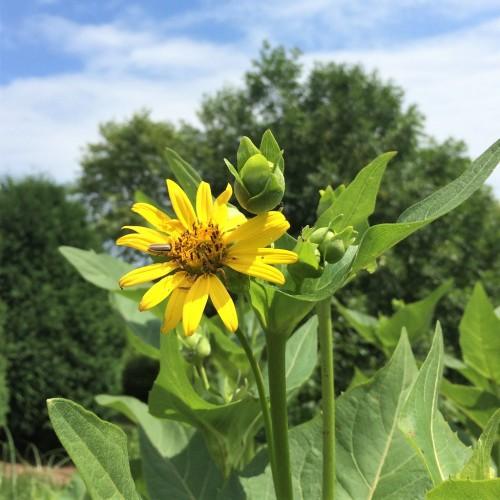
rosinweed
Silphium integrifolium
Cycle:
Herbaceous Perennial
Watering:
Average
Hardiness Zone:
4 - 8
Flowers:
Flowers
Sun:
Full sun
Leaf:
Yes
Growth Rate:
Low
Maintenance:
Low
Drought Tolerant:
Yes
Salt Tolerant:
Yes
Thorny:
Yes
Care Level:
Medium
watering
Water rosinweed plants every 5-7 days in the spring and summer and every 10-14 days in the fall and winter. When watering, make sure to provide 1-2 inches of water to the soil around each plant, as rosinweeds prefer moist but not soggy soil conditions. Rosinweed plants should not be overwatered and should always be allowed to dry out between watering.
sunlight
Rosinweed (Silphium integrifolium) is a native wildflower which grows best in a sunny location. It should have at least 3 to 4 hours of direct sunlight per day, preferably during the early morning hours. This sun exposure will help this plant reach its full flower potential, with an array of bright yellow blossoms indicating it's flourishing health. Too much sunlight can be harmful, so avoiding peak sun hours (10 am to 2 pm) is recommended. Additionally, Rosinweed should be well-watered in the spring and fall for optimal growth.
pruning
Pruning rosinweed (Silphium integrifolium) should be done annually in the late winter or early spring. It is important to prune the plant before it begins to burst into new growth. As with all pruning, it is good to remove any dead, damaged or diseased branches. When pruning rosinweed, it's best to remove no more than 1/3 of the total stem mass. This will ensure the plant has plenty of nutrients and energy for the new growth, while still leaving enough of the structure to support the entire canopy. Taking too much will weaken the plant and reduce its ability to repel pests and disease.
